
The Enchanting Slovak Karst National Park
Discover the hidden gems of Slovak Karst National Park, a UNESCO World Heritage site brimming with natural beauty, underground wonders, and rich cultural history.
Nestled in the heart of Slovakia, Slovak Karst National Park is a treasure trove of natural wonders and breathtaking landscapes. This UNESCO World Heritage site is renowned for its vast karst formations, rich biodiversity, and extensive network of caves. The park spans over 346 square kilometers and offers an unparalleled experience for nature lovers and adventure seekers alike. One of the park's most striking features is the Domica Cave, a sprawling subterranean marvel that stretches over 25 kilometers. Visitors can explore its intricate stalactite and stalagmite formations, underground rivers, and ancient archaeological remains. The cave is also home to a variety of bat species, making it a fascinating spot for wildlife enthusiasts. Above ground, the park boasts lush forests, picturesque meadows, and dramatic cliffs. Hiking trails of varying difficulty levels meander through the landscape, offering stunning views and opportunities to spot rare flora and fauna. The park is also dotted with several historical sites, including medieval ruins and traditional Slovak villages, providing a glimpse into the region's rich cultural heritage. Whether you're spelunking in the depths of Domica Cave, hiking through pristine forests, or simply soaking in the serene beauty of the park, Slovak Karst National Park promises an unforgettable adventure.
Local tips in Slovak Karst National Park
- Wear sturdy hiking boots as the terrain can be rugged and uneven.
- Bring a flashlight if you plan to explore the caves, even if guided tours provide some lighting.
- Visit in spring or autumn for the most pleasant weather and fewer crowds.
- Learn a few basic Slovak phrases; locals appreciate the effort and it can enhance your experience.
- Carry cash as some local establishments may not accept credit cards.
The Enchanting Slovak Karst National Park
Nestled in the heart of Slovakia, Slovak Karst National Park is a treasure trove of natural wonders and breathtaking landscapes. This UNESCO World Heritage site is renowned for its vast karst formations, rich biodiversity, and extensive network of caves. The park spans over 346 square kilometers and offers an unparalleled experience for nature lovers and adventure seekers alike. One of the park's most striking features is the Domica Cave, a sprawling subterranean marvel that stretches over 25 kilometers. Visitors can explore its intricate stalactite and stalagmite formations, underground rivers, and ancient archaeological remains. The cave is also home to a variety of bat species, making it a fascinating spot for wildlife enthusiasts. Above ground, the park boasts lush forests, picturesque meadows, and dramatic cliffs. Hiking trails of varying difficulty levels meander through the landscape, offering stunning views and opportunities to spot rare flora and fauna. The park is also dotted with several historical sites, including medieval ruins and traditional Slovak villages, providing a glimpse into the region's rich cultural heritage. Whether you're spelunking in the depths of Domica Cave, hiking through pristine forests, or simply soaking in the serene beauty of the park, Slovak Karst National Park promises an unforgettable adventure.
When is the best time to go to Slovak Karst National Park?
Iconic landmarks you can’t miss
Bratislava Castle
Discover the enchanting Bratislava Castle, a historic gem overlooking the Danube River, offering breathtaking views, rich history, and captivating exhibits.

Orava Castle
Explore the stunning Orava Castle, a captivating blend of history and architecture set amidst breathtaking landscapes in Slovakia.

Hrad Devín
Explore Hrad Devín, a historic fortress in Slovakia offering breathtaking views and a journey through the region's rich past.

Low Tatras National Park
Explore the breathtaking Low Tatras National Park, a natural wonder in Slovakia with stunning landscapes, diverse wildlife, and thrilling outdoor activities.

Castle of Spirits (Bojnice Castle)
Discover the enchanting Bojnice Castle, a historical gem in Slovakia, where fairy tale architecture meets rich cultural heritage amidst stunning landscapes.
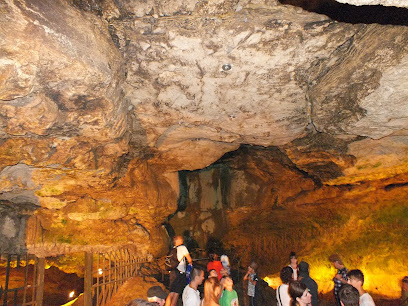
Spiš Castle
Discover the majestic Spiš Castle, a UNESCO World Heritage site, showcasing rich history and stunning landscapes in Slovakia.

Jánošíkove Diery
Explore Jánosíkove Diery, a breathtaking hiking paradise in Slovakia, featuring stunning gorges, waterfalls, and rich folklore.

Slovak Paradise National Park
Explore the stunning landscapes and thrilling adventures of Slovak Paradise National Park, a natural treasure in Slovakia.

Baradla Aggtelek Cave (Entrance)
Explore the enchanting Baradla Aggtelek Cave, a UNESCO World Heritage site in Hungary, featuring stunning geological formations and breathtaking underground landscapes.

Cave of Liberty
Explore the stunning formations of the Cave of Liberty, a natural wonder in Demänovská Dolina, Slovakia, rich in beauty and history.
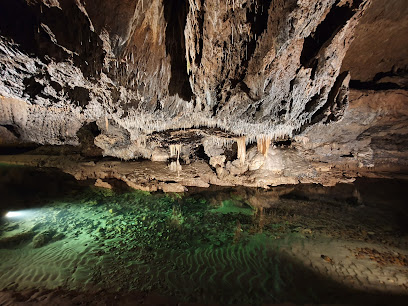
Pieniny National Park
Explore the breathtaking landscapes and rich biodiversity of Pieniny National Park, a natural wonder in Slovakia perfect for outdoor adventures and serene escapes.
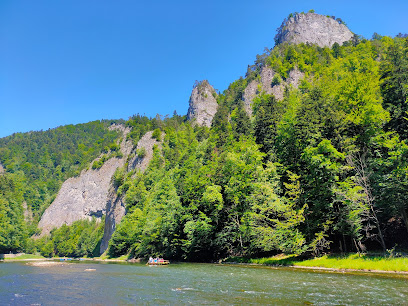
Aggtelek National Park
Explore the stunning Aggtelek National Park, Hungary's natural haven of caves, rich biodiversity, and breathtaking landscapes.

Chránená krajinná oblasť Strážovské vrchy
Experience the breathtaking beauty of Strážovské Hills National Forest, a serene haven for nature lovers and adventure seekers near Dubnica nad Váhom.

Slovak Karst
Explore the breathtaking Slovak Karst, a UNESCO World Heritage Site known for its stunning limestone formations, caves, and rich biodiversity.

Ochtinská Aragonite Cave
Explore the enchanting Ochtinská Aragonite Cave in Slovakia, a unique natural wonder with breathtaking formations and rich geological history.
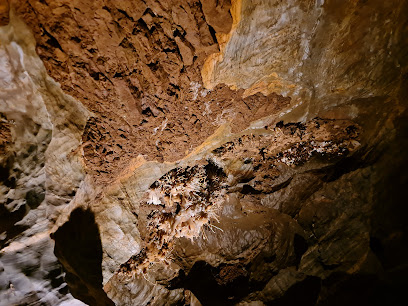
Unmissable attractions to see
Baradla Aggtelek Cave (Entrance)
Explore the breathtaking Baradla Aggtelek Cave, a UNESCO World Heritage site filled with stunning formations and rich geological history in Hungary.

Domica Cave
Explore the breathtaking Domica Cave, a UNESCO World Heritage site in Slovakia, known for its stunning formations and unique underground boat tours.

Anglický park pri kaštieli Andrássyovcov
Experience the serene beauty of the English Park at Betliar Castle, a perfect blend of nature and historical architecture in Slovakia.

Gombasek Cave
Explore the breathtaking Gombasek Cave in Slovakia, a UNESCO World Heritage Site featuring stunning stalactites and stalagmites.

Hrhov waterfall
Experience the breathtaking beauty of Hrhov Waterfall, a hidden gem in Slovakia perfect for nature lovers and adventurers alike.

Zádielska gorge
Discover the breathtaking beauty of Zádielska Gorge, a natural wonder in Slovakia perfect for hiking, photography, and exploration.

Silicka ľadnica
Discover Silická Ľadnica, a breathtaking ice cave in Slovakia known for its stunning ice formations and unique geological features, perfect for adventurers.

Strážna veža
Discover the rich history and breathtaking views at Strážna Veža, a historic landmark in Rožňava, Slovakia.

Krásnohorská Jaskyňa Cave (trailhead)
Discover the mesmerizing Krásnohorská Jaskyňa Cave in Slovakia, a stunning natural wonder filled with breathtaking stalactite formations and rich geological history.

Banícke múzeum v Rožňave - Zážitkové centrum Sentinel
Explore the Banícke múzeum v Rožňave and uncover the fascinating mining history of Slovakia in a unique cultural setting.

Vodný hrad Štítnik
Explore Vodný hrad Štítnik, a breathtaking water castle in Slovakia, rich in history and surrounded by stunning natural beauty.

Mining Museum in Rožňava
Explore the Mining Museum in Rožňava to discover Slovakia's rich mining history with engaging exhibits and educational experiences for all ages.

Jazero Betliar
Experience the breathtaking beauty of Jazero Betliar, a serene lake destination surrounded by lush nature, perfect for relaxation and outdoor adventures.

Dievčenská skala
Explore the breathtaking beauty of Dievčenská skala, a natural wonder in Jovice, perfect for hiking and enjoying stunning views.

Margitin prameň
Explore the serene Margitin prameň in Slavec, a natural spring surrounded by lush landscapes, perfect for relaxation and reconnecting with nature.

Essential places to dine
Slovak Pub
Discover authentic Slovak cuisine at Slovak Pub in Bratislava – a vibrant restaurant offering traditional dishes and local brews.

Bratislava Flagship
Experience authentic Slovak cuisine at Bratislava Flagship – where tradition meets taste in the heart of Slovakia's vibrant capital.

Bratislavský Meštiansky Pivovar
Discover Bratislavský Meštiansky Pivovar: Where Traditional Slovak Cuisine Meets Local Craft Beer in the Heart of Bratislava.
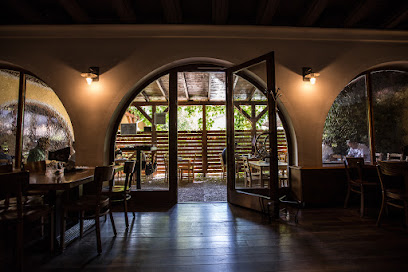
UFO
Experience unforgettable dining at UFO Restaurant in Bratislava with stunning views and exquisite Slovakian cuisine.

Gatto Matto Panská
Experience the best of Italian and seafood cuisine at Gatto Matto Panská in Old Town - a culinary delight not to be missed.

Reštaurácia Divný Janko
Experience authentic Slovak cuisine at Reštaurácia Divný Janko in Old Town – where tradition meets taste in every dish.

Koliba Kamzík Zelená
Discover the rich flavors of Slovakia at Koliba Kamzík Zelená - a family-friendly restaurant offering traditional cuisine in a charming setting.

Slovak Karst
Explore Slovak Karst National Park's stunning limestone landscapes and captivating caves in Slovakia's natural paradise.
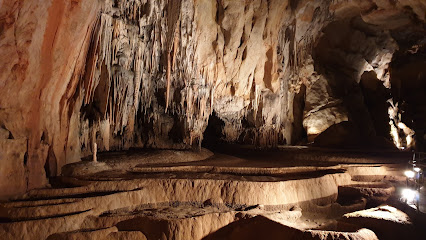
Lemontree & Sky Bar Restaurant Bratislava
Discover contemporary Slovak cuisine at Lemontree & Sky Bar Restaurant in Bratislava - where stunning views meet exceptional flavors.

Jasmin
Discover authentic Chinese flavors at Jasmin - Bratislava's premier destination for Asian cuisine.

Furkotka
Discover Furkotka: Your gateway to unforgettable adventures in Vysoké Tatry with authentic Slovak cuisine and cozy accommodations.

Urban Bistro
Discover Urban Bistro: A Culinary Gem in Bratislava Offering Delicious Breakfasts, Cozy Atmosphere, and Fresh Ingredients.

Ranch under Ostrá Skala
Discover rustic elegance at Ranch under Ostrá Skala - where delicious local cuisine meets unforgettable outdoor adventures in Stratená.

Restauracja Javorina
Experience authentic Polish cuisine surrounded by stunning Tatra Mountain views at Restauracja Javorina in Zakopane.
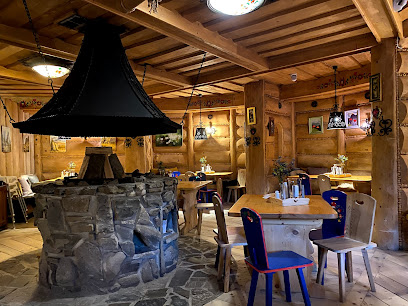
Modrá Hviezda / Blue Star
Experience authentic Slovak cuisine at Modrá Hviezda in Old Town Bratislava – where tradition meets culinary excellence.

Markets, malls and hidden boutiques
AVION Shopping Park Bratislava
Experience shopping bliss at AVION Shopping Park Bratislava, featuring top brands, delectable dining, and exciting events in a vibrant atmosphere.

Low Tatras National Park
Explore Low Tatras National Park, Slovakia's stunning outdoor paradise with breathtaking views, diverse wildlife, and thrilling adventures for every nature lover.
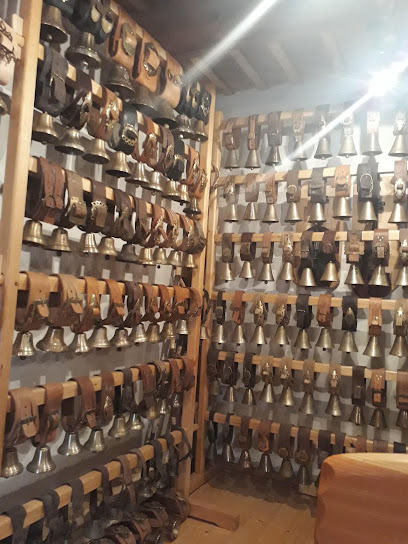
Bory Mall
Bory Mall: Your ultimate shopping destination in Bratislava with diverse retail, dining, and entertainment options for an unforgettable experience.
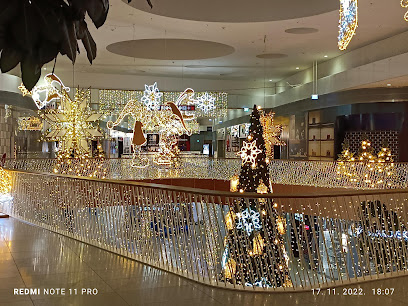
Slovak Paradise National Park
Discover the breathtaking beauty and adventure of Slovak Paradise National Park, a must-visit destination for nature lovers and outdoor enthusiasts in Slovakia.

OC Optima
Explore OC Optima, the ultimate shopping destination in Košice, where style meets variety and dining delights await.

Slovak Karst
Explore the breathtaking natural beauty and unique geological wonders of Slovak Karst National Park, a UNESCO World Heritage Site in Slovakia.

Kaufland Roznava
Discover Kaufland Rožňava, a modern supermarket offering a wide variety of local and international products for all your shopping needs.
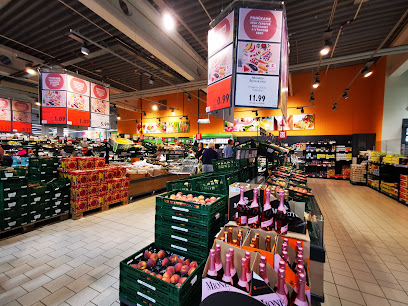
Billa Rožňava
Discover local flavors and fresh produce at Billa Rožňava, your go-to supermarket in the heart of Slovakia.

The Oldest shop in town
Explore a piece of history at The Oldest Shop in Town, where unique gifts and local flavors come together in Old Town.
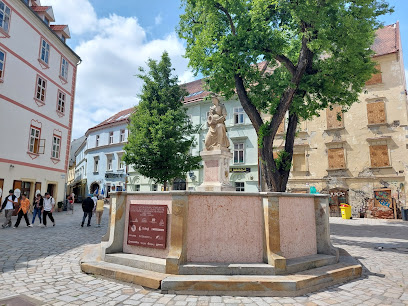
OKAY
Explore the latest electronics at OKAY in Rožňava, offering top-notch products and exceptional customer service for all your tech needs.

Záhrada a Bývanie Z&M, s. r. o.
Discover a vibrant garden center in Brzotín, Záhrada a Bývanie Z&M, where nature's beauty meets expert gardening advice.

Bezpečné liehoviny MAXXL Diskont
Explore a diverse range of local and international liquors at MAXXL Diskont in Rožňava, where quality meets affordability for all your beverage needs.

Deichmann
Discover Deichmann in Rožňava for stylish, affordable footwear perfect for every adventure.

JYSK Rožňava
Discover stylish and affordable furniture, bedding, and outdoor essentials at JYSK Rožňava, your go-to store for home comfort in Slovakia.

sinsay
Shop the latest trends at Sinsay in Rožňava, a fashion haven offering stylish apparel for all ages at affordable prices.

Essential bars & hidden hideouts
100P BAR
Discover the lively atmosphere of 100P Bar in Rožňava, where great drinks meet unforgettable experiences.
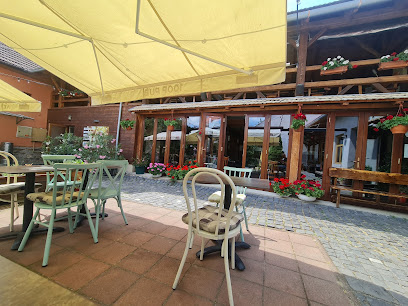
Rajský dvor
Experience the charm of Rajský dvor in Rožňava, a cozy bar offering delightful drinks and a warm atmosphere in the heart of Slovakia.

pub Gemer
Experience the warmth of Slovak hospitality at Pub Gemer, a cozy pub in Rožňava with a delightful selection of local drinks and snacks.

PATRIA
Experience the vibrant nightlife at Patria in Rožňava, where great drinks and a welcoming atmosphere await every visitor.

KELT
Experience authentic Slovak culture and cuisine at KELT Pub, a cozy spot in Rožňava perfect for relaxation and local brews.

Hostinec SNAHA
Discover the authentic flavors of Slovakia at Hostinec SNAHA, a lively pub in Rožňava offering traditional dishes and local drinks.

Hostinec u Mariky - Malá Danka
Discover the charm of Slovak cuisine and local brews at Hostinec u Mariky, a cozy pub in Rožňava, perfect for unwinding after a day of exploration.
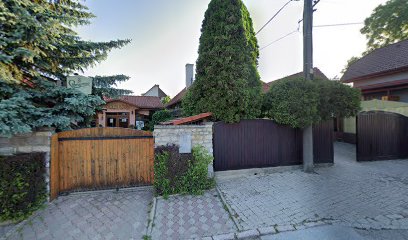
Viking bar
Experience the vibrant Norse-themed nightlife at Viking Bar in Rožňava, where great drinks and friendly faces await every visitor.

Pohostinstvo Baníček
Experience the heart of Slovak hospitality at Pohostinstvo Baníček, where traditional cuisine and a cozy atmosphere await.

Sherwood Club Rožňava
Experience the vibrant nightlife at Sherwood Club Rožňava, where local flavors meet a cozy ambiance.

Pohostinstvo Dlhá Ves
Experience the warm hospitality and local flavors at Pohostinstvo Dlhá Ves, a charming bar in the heart of Dlhá Ves, Slovakia.
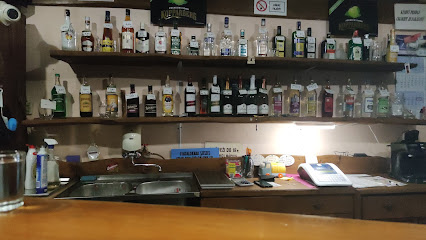
Herňa - Bar Monte Carlo
Experience the cozy charm of Herňa - Bar Monte Carlo in Rožňava, Slovakia, where great drinks and friendly atmosphere await you.
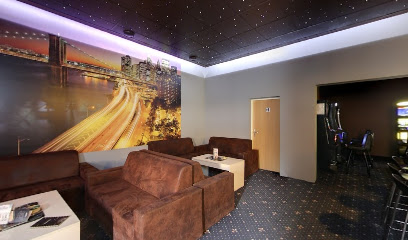
HOUSE Bar & Coffee
Experience the perfect blend of comfort and flavor at HOUSE Bar & Coffee in Rožňava, where every sip tells a story.

Hostinec u Laciho
Experience the warmth of Slovak hospitality at Hostinec u Laciho, a charming bar in Krásnohorská Dlhá Lúka, offering a taste of local culture and flavors.

Wood Pub
Discover the cozy ambiance and local spirit of Wood Pub in Slavec, where delightful drinks and warm hospitality await every visitor.

Local Phrases about Slovak Karst National Park
-
- HelloAhoj
[Ahoy] - GoodbyeDovidenia
[Doh-vee-deh-nya] - YesÁno
[Ah-noh] - NoNie
[Nee-eh] - Please/You're welcomeProsím
[Pro-seem] - Thank youĎakujem
[Dyah-koo-yem] - Excuse me/SorryPrepáčte
[Preh-pahch-teh] - How are you?Ako sa máte?
[Ah-koh sah mah-teh] - Fine. And you?Dobre. A vy?
[Doh-breh. Ah vee] - Do you speak English?Hovoríte po anglicky?
[Hoh-voh-ree-teh poh ahn-gleet-skee] - I don't understandNerozumiem
[Neh-roh-zoo-mee-yem]
- HelloAhoj
-
- I'd like to see the menu, pleaseChcel by som vidieť menu, prosím
[Hchel bee sohm vee-dyeh-t menu, pro-seem] - I don't eat meatNejem mäso
[Neh-yem mah-soh] - Cheers!Na zdravie!
[Nah zdrah-vee-eh] - I would like to pay, pleaseChcel by som zaplatiť, prosím
[Hchel bee sohm zah-plah-teet, pro-seem]
- I'd like to see the menu, pleaseChcel by som vidieť menu, prosím
-
- Help!Pomoc!
[Poh-mohts] - Go away!Choď preč!
[Chohd prehch] - Call the Police!Zavolaj políciu!
[Zah-voh-la y po-lee-tsyou] - Call a doctor!Zavolajte lekára!
[Zah-voh-la-yeh te leh-ka-rah] - I'm lostStratil som sa
[Strah-teel sohm sah] - I'm illSom chorý
[Sohm khor-ee]
- Help!Pomoc!
-
- I'd like to buy...Chcel by som kúpiť...
[Hchel bee sohm koo-peet] - I'm just lookingLen sa pozerám
[Lehn sah poh-zeh-rahm] - How much is it?Koľko to stojí?
[Kohl-koh toh stoh-yee] - That's too expensiveTo je príliš drahé
[Toh yeh pree-lish dra-heh] - Can you lower the price?Viete znížiť cenu?
[Vee-eh-teh znee-zheet tseh-noo]
- I'd like to buy...Chcel by som kúpiť...
-
- What time is it?Koľko je hodín?
[Kohl-koh yeh hoh-deen] - It's one o'clockJe jedna hodina
[Yeh yehd-nah hoh-dee-nah] - Half past (10)Polovica desiatej
[Poh-loh-vee-tsah deh-syah-teh-ee] - MorningRáno
[Rah-noh] - AfternoonPopoludní
[Poh-poh-loo-dnee] - EveningVečer
[Veh-chehr] - YesterdayVčera
[Vcheh-rah] - TodayDnes
[Dnes] - TomorrowZajtra
[Zai-trah] - 1Jedna
[Yehd-nah] - 2Dve
[Dveh] - 3Tri
[Tree] - 4Štyri
[Shteer-ee] - 5Päť
[Pah-t] - 6Šesť
[Shtehsht] - 7Sedem
[Seh-dehm] - 8Osem
[Oh-sehm] - 9Deväť
[Deh-vah-t] - 10Desať
[Deh-saht]
- What time is it?Koľko je hodín?
-
- Where's a/the...?Kde je...
[Kdeh yeh] - What's the address?Aká je adresa?
[Ah-kah yeh ah-dreh-sah] - Can you show me (on the map)?Môžete mi ukázať (na mape)?
[Moo-zheh-teh mee oo-kah-zah-t (nah mah-peh)] - When's the next (bus)?Kedy je ďalší (autobus)?
[Keh-dee yeh d-yal-shee owtaw-boos] - A ticket (to ....)Lístok (do ....)
[Lees-tohk (doh)]
- Where's a/the...?Kde je...
History of Slovak Karst National Park
-
Evidence of human settlement in the Slovak Karst region dates back to the Paleolithic era. Archaeological findings, including tools and pottery, suggest that early humans were drawn to the area's abundant natural resources and sheltered cave systems.
-
During the medieval period, the Slovak Karst region became an important center for mining activities. The area's rich deposits of iron ore, silver, and other minerals attracted miners and contributed to the development of local communities. Remnants of ancient mining operations can still be found scattered across the park.
-
In the 16th and 17th centuries, the Slovak Karst region was affected by the Turkish invasions. To protect the local population, numerous fortifications and castles were built, such as the Krásna Hôrka Castle. These structures served as defensive strongholds and played a significant role in the region's history.
-
The late 19th and early 20th centuries marked the golden age of speleology (the study of caves) in the Slovak Karst region. Pioneering explorers, such as Ján Majko and Móric Beňovský, conducted extensive research and documentation of the area's intricate cave systems, including the famous Domica Cave.
-
In 2002, the Slovak Karst region was designated as a national park to preserve its unique karst landscapes, rich biodiversity, and cultural heritage. The park covers an area of approximately 346 square kilometers and is renowned for its extensive cave systems, diverse flora and fauna, and historical landmarks.
-
In 1995, the caves of the Slovak Karst, along with the Aggtelek Karst in Hungary, were inscribed as a UNESCO World Heritage Site. This recognition highlights the global significance of the region's geological formations and the exceptional natural beauty of its karst landscape.
Slovak Karst National Park Essentials
-
Slovak Karst National Park is located in the Košice Region of eastern Slovakia. The nearest international airport is Košice International Airport, approximately 60 kilometers away. From Košice, you can take a train to Rožňava, the nearest town to the park, which takes around 1.5 hours. Alternatively, you can rent a car at the airport and drive to the park, which offers flexibility to explore the surrounding areas.
-
Public transportation within Slovak Karst National Park is limited. Renting a car is the most convenient option for exploring the park and its attractions at your own pace. Bicycles can also be rented in nearby towns for a more eco-friendly way to travel. For those who prefer not to drive, guided tours are available and provide transportation to key sites within the park.
-
The official currency in Slovakia is the Euro (EUR). Credit cards are widely accepted in hotels, restaurants, and larger shops, but it is advisable to carry cash for smaller establishments and rural areas. ATMs are available in Rožňava and other nearby towns, so withdrawing cash is relatively easy.
-
Slovak Karst National Park is generally safe for tourists. However, like any travel destination, it is important to take standard precautions. Avoid isolated areas at night and be mindful of your belongings in crowded places. While there are no specific high-crime areas targeting tourists, staying vigilant and aware of your surroundings is always recommended.
-
In case of emergency, dial 112 for immediate assistance. Local police stations and medical facilities are available in Rožňava and other nearby towns. It is recommended to have travel insurance that covers medical emergencies. For minor health issues, pharmacies in the region can provide over-the-counter medications.
-
Fashion: Do dress appropriately for outdoor activities. Wear comfortable hiking shoes and weather-appropriate clothing. Religion: Do respect local customs and traditions. When visiting religious sites, dress modestly and keep noise to a minimum. Public Transport: Do be courteous and give up your seat to elderly passengers. Don’t eat or drink on public transport. Greetings: Do greet people with a handshake and a friendly smile. Eating & Drinking: Do try local Slovak delicacies and accept food offerings graciously. Don’t refuse hospitality, as it is considered impolite.
-
To experience Slovak Karst National Park like a local, visit the local markets in Rožňava where you can buy fresh produce and traditional Slovak goods. Engage with locals, as they are often friendly and willing to share stories about the region’s history and culture. Don’t miss exploring the Domica Cave, a UNESCO World Heritage site, and the Gombasek Cave, known for its unique formations. For a unique experience, take part in a guided cave tour or a hiking trip to the Silica Ice Cave.
Trending Landmarks in Slovak Karst National Park
-
Bratislava Castle
-
Orava Castle
-
Hrad Devín
-
Low Tatras National Park
-
Castle of Spirits (Bojnice Castle)
-
Spiš Castle
-
Jánošíkove Diery
-
Slovak Paradise National Park
-
Baradla Aggtelek Cave (Entrance)
-
Cave of Liberty
-
Pieniny National Park
-
Aggtelek National Park
-
Chránená krajinná oblasť Strážovské vrchy
-
Slovak Karst
-
Ochtinská Aragonite Cave
Nearby Cities to Slovak Karst National Park
-
Things To Do in Košice
-
Things To Do in Miskolc
-
Things To Do in Prešov
-
Things To Do in Salgotarjan
-
Things To Do in Eger
-
Things To Do in Zakopane
-
Things To Do in Banská Bystrica
-
Things To Do in Nyiregyhaza
-
Things To Do in Martin
-
Things To Do in Uzhhorod
-
Things To Do in Vac
-
Things To Do in Žilina
-
Things To Do in Debrecen
-
Things To Do in Tarnow
-
Things To Do in Mukachevo









